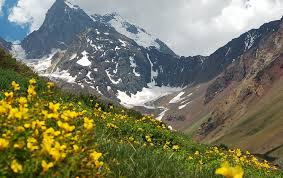Nature
Here are some essential technology and technique tips to enhance your nature photography:
Equipment
Camera: A DSLR or mirrorless camera is ideal for full control over settings like light sensitivity, shutter speed, and ISO. For wildlife, consider cameras with high burst speed and multiple autofocus points for tracking fast-moving subjects.
Lenses: Use a wide-angle zoom lens for landscapes and a telephoto lens for distant wildlife. Macro lenses are great for detailed close-ups of plants or insects.
Tripod: Essential for stability during long exposures, panoramas, or low-light conditions. A sturdy tripod ensures sharp images and allows creative techniques like motion blur.
Accessories: Neutral density filters help with long exposures during daylight. Cable releases or remotes prevent camera shake.
Camera Settings
Shutter Speed: Use fast speeds (1/1000 to 1/2000 seconds) to freeze motion, such as birds in flight. Slow speeds create motion effects in waterfalls or clouds.
ISO: Start with ISO 800 for wildlife; adjust based on lighting conditions. Lower ISO is preferable for landscapes to reduce noise.
Focus Modes: AI Servo mode tracks moving objects continuously, ensuring sharp focus on dynamic wildlife scenes.
Composition Tips
Rule of Thirds: Compose shots using a grid to position subjects at intersections for balanced and engaging images.
Natural Frames: Use elements like branches or archways to add depth and focus to your photos.
Perspective: Experiment with angles—low shots can emphasize scale, while overhead views provide context.
Lighting
Shoot during the "golden hours" (just after sunrise or before sunset) for soft, warm light that enhances colors and textures.
Avoid harsh midday sunlight; use diffused lighting or backlighting creatively for dramatic effects.
Special Techniques
Panoramas: Use vertical orientation, overlap images by half, and lock ISO and white balance for consistent lighting across frames2.
Long Exposures: Calm rivers or soften clouds using slow shutter speeds with a tripod and neutral density filters.
Other Tips
Turn off the camera beep to avoid disturbing wildlife.
Weather sealing is crucial for outdoor conditions like rain and dust.
Practice at home to familiarize yourself with equipment capabilities before heading outdoors.
By combining the right gear, settings, and techniques, you can capture stunning nature photographs that showcase the beauty of the outdoors.
Lighting
Shoot during the "golden hours" (just after sunrise or before sunset) for soft, warm light that enhances colors and textures.
Avoid harsh midday sunlight; use diffused lighting or backlighting creatively for dramatic effects.
Special Techniques
Panoramas: Use vertical orientation, overlap images by half, and lock ISO and white balance for consistent lighting across frames2.
Long Exposures: Calm rivers or soften clouds using slow shutter speeds with a tripod and neutral density filters.
Other Tips
Turn off the camera beep to avoid disturbing wildlife.
Weather sealing is crucial for outdoor conditions like rain and dust.
Practice at home to familiarize yourself with equipment capabilities before heading outdoors.
By combining the right gear, settings, and techniques, you can capture stunning nature photographs that showcase the beauty of the outdoors.

